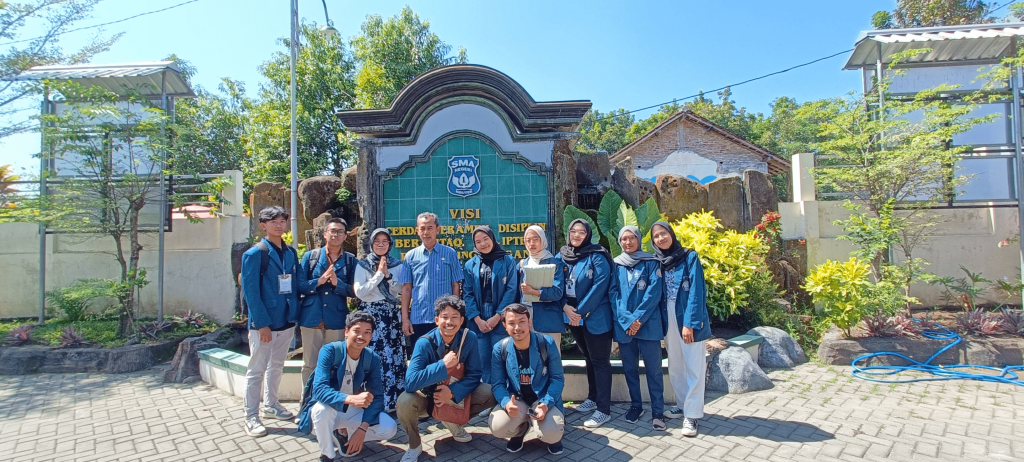Higher education is an educational institution that primarily operates on three important points: education, research, and community service. Universities are expected to be able to carry out education and research directed towards the welfare of society and the nation’s competitiveness. The knowledge studied, learned, and researched is intended to be applied in everyday life in society. Therefore, the Electronics and Instrumentation (Elins) Department of Physics, Diponegoro University, consisting of Dr. Ir. Ainie Khuriati, Drs. Isnain Gunadi, M.Si., Jatmiko Endro Suseno, S.Si., M.Si., Ph.D., F.Med., Heri Sugito, S.Si., M.Si., F.Med., along with several students, introduced the technology of line-following robots and the Internet of Things to 12th-grade students at SMAN 1 Nguter, Sukoharjo. The activity took place on July 18, 2023, and our arrival was warmly welcomed by the principal of SMAN 1 Nguter.
A robot is a machine generally developed to reduce the risk factors of human work, increase productivity, reduce the number of workers, improve the comfort of any worker, and drive innovation. The ability to work in hazardous places has put robotics in a favorable position compared to many similar technologies. In this community service, we introduced one type of robot, namely a line-following robot that traces black lines on a white surface. The main component behind this robot is the ATmega328 microcontroller, which serves as the brain of the robot, and infrared sensors to track the lines.
The Internet of Things (IoT) is a concept of utilizing internet technology used as a communication medium between devices embedded with sensors and other electronic devices with the aim of communicating, controlling, connecting, and exchanging data. This concept allows people to access electronic devices anywhere and anytime, as long as they are connected to the internet.
In this community service, a demonstration of IoT was carried out using the Esp32 microcontroller and other devices, namely lights, relays, and mobile phones. Simply put, the light will be remotely controlled using the WhatsApp application on a mobile phone to turn it on or off. The microcontroller functions as the brain or central processing unit in receiving input data and processing it to provide output in the form of decisions to turn the light on or off through the relay’s operation. The relay acts as a switch for the light controlled by the microcontroller as well. The relay serves as an intermediary between the light and the AC voltage source, with the microcontroller only providing a DC voltage signal. This demonstration is a small example of the application of smart homes. A smart home is a technology-based residence that provides ease in centrally controlling home appliances remotely and in real-time.
This community service is expected to motivate 12th-grade students at SMAN 1 Nguter to continue their studies enthusiastically. One of the goals is to have the willingness to continue their education to higher education. Higher education will be able to provide facilities to access a broader range of knowledge and technology, including IoT and robotics technology.


